AAS 201 Group Project ( Caaav) Write-Up PDF

| Title | AAS 201 Group Project ( Caaav) Write-Up |
|---|---|
| Course | Survey of Asian American Literature |
| Institution | California State University Northridge |
| Pages | 6 |
| File Size | 99.4 KB |
| File Type | |
| Total Downloads | 10 |
| Total Views | 159 |
Summary
Worth 35% of grade....
Description
1
AAS 201 Group Presentation Write-Up (CAAAV) The Community Against Anti-Asian Violence was the first group founded as a response to racially motivated violence against Asians in 1986 in New York City. The formation of this group was influenced by the murder of Vincent Chin who was a Chinese-American beaten to death. The white murderers, however, were just charged minor charges such as a 3 year probation with the community outrage because they knew that is was an act of hate and racism. The purpose of this organization is also to build power of low income Asian immigrants and refugees in New York. This organization also gives power to the people by building leaders in Asian communities to fight against institutions and policies that affect them. They are also involved in a broader movement for racial and economic justice. The Committee Against Anti-Asian Violence primarily focuses on empowering the poor and working class Asian American community, but also organizes communities to join together for institutional change that involve progress towards racial, gender, and economic justice. They are based in New York City but extend much further than this community. They have connections with other programs and get involved in many different projects that help towards strengthening the people’s power over all. An example of a community project they started in New York City was the rezoning campaign. This rezoning campaign targeted its’ Chinatown that is considered one of the last affordable working class and immigrant communities. In this community living conditions have deteriorated and gotten worse over time. There has been complaints that rent has skyrocketed both for homes and businesses, residents are being harassed by police, community programs are being cut, and families are now forced to live in overcrowded apartments or shelters. Despite all the chaos, city officials are pushing developers
2
into demolishing buildings in order to build brand new hotels and condos. The Committee Against Anti-Asian Violence is now taking action to prevent such events to protect their homes, people and culture. They think that a good zoning plan can instead protect low-income residents and create a Chinatown for everybody. The Community Against Anti Asian Violence is an organization for the social and economic empowerment of Asian Americans. Initially, the organization was primarily based against violence, as anti-Asian violence activism peaked in 1986. Murder of Vincent Chin (Foreigner Racialization) Founded in 1986, the organization was undoubtedly has been influenced by the murder of Vincent Chin in 1982. The unlawful murder of Vincent Chin was a hate crime as the white superintendent of Chrysler, along with his stepson, brutally beat Vincent to death. However, the justice system in America charged the two with manslaughter and allowed them to take a plea bargain for a drastically reduced sentence. The two men that were beating up Vincent Chin called him a “jap” despite him being a Chinese American. This is significant because of the fact that this has ties to foreigner racialization. According to Ancheta, foreigner racialization occurs when the stereotypes of a “foreigner” become applied to someone who looks like a foreigner and thus suffers the same discrimination and racism (Ancheta). This type of racializtion is not dependent on actual race, but the victim’s appearance. Ancheta even goes further to cite the coram nobis Supreme Court case during World War II, where the United States judicial system stated that simply “looking like the enemy” was enough grounds to seize and put a citizen into a concentration camp (Legal Information Institute). There are obvious connections between the Committee Against Asian American Violence and the AAPA and Asian American Movement readings. On the first page of the AAPA readings
3
it states the need to, “...Affirm the right of the Self-Determination,” and, “...Have complete control over the political, economic, and educational institutions within their communities.” And on the home-page of the CAAAV’s website the very first statement is to, “...Impact policies and institutions that affect their lives and to participate in a broader movement for racial and economic justice.” It’s evidence that the CAAAV is using AAPA as a background and base for their mission in our modern day. Although they keep the term “Asian American” in their name, which was first coined by Yuji Ichioka for the Asian American Political Alliance (Fong, Jan. 22, 2015), the CAAAV uses the term “Pan-Asian” on their website to have the same umbrella effect. Just as the Asian American Movement stood in solidarity with groups such as the Black Panthers (Meada, 108), the CAAAV stands in solidarity with groups such as DRUM, Adhikaar, and Justice Committee against violence on the Black community (“This Stops…” n.d.). The CAAAV was at the forefront of a rally march against police violence on the Black community, a problem that the CAAAV is completely devoted to in their own community. This not only has it roots in a common goal but also in the movements from the past where the lessons were that there is strength in numbers. The Committee Against Asian American Violence is just one of the many organizations that formed to continue and further the work of groups such as AAPA and the Asian American Movement. The Community Against Anti Asian Violence, as of today, is aiming towards bringing a halt to the “U.S. Pivot to Asia,” that is currently being discussed by our government. This so called fulcrum’s intent is to develop and strengthen the United States tenure over Asian-Pacific land, and the people who have inhabited those lands for centuries. This organization is bringing to light the voices of these people, that who over history, have been oppressed by the United States, and who otherwise would be too crippled by the U.S.’s power to speak up. By organizing
4
protests during President Obama visit to Japan, Korea, and the Philippines these organizations have become the backbone this community of exploited, and abused people needed to get back on their feet and fight for their freedom. Another organization that’s striving to aid the Asian Pacific Islander Community is the Pilipino Workers Center. Since the number of Filipinos in Southern California have been growing, PWC has recognized the amount of undocumented Filipinos that are being exploited in the workplace has been growing as well. Many of these Filipinos have gotten stranded in U.S. after their work visa had expired, others have been brought to the United States through sex trafficking, but most have come to the U.S. to help their struggling families back home. This community based organization does all that it can to push immigration reform forward, in order to change the current immigration policies, as well as create better, and safer working environments for working class filipinos. Just last year the center organized a campaign in order to pass TPS (Temporary Passage Status), where thousands of Filipinos from various age groups gathered to bombard the John Kerry, the Secretary of State department, and other political offices with phone calls, and text messages in order to raise awareness.
5
Bibliography Ancheta, Angelo N. Race, Rights, and the Asian American Experience. New Brunswick, NJ: Rutgers UP, 2006. Print. Kelly Fong, Lecture, Asian American Studies 201, January 22, 2015 Maeda, D. (2012). Rethinking The Asian American Movement. In American Social and Political Movements of the Twentieth Century (pp. 105-135). New York: Routeledge. Ochoa, Cecile C. "Workers' Center Provides Lifeline for Undocumented Filipinos." Workers' Center Provides Lifeline for Undocumented Filipinos. N.p., n.d. Web. 04 May 2015. This Stops Today! DRUM and CAAAV Rally in Queens Against Police Violence on Black Communities. (n.d.). Retrieved April 29, 2015, from http://caaav.org/ US Out of the Asia-Pacific Region! No to the US “Pivot” to Asia! | CAAAV.org." CAAAVorg
6
RSS. CAAAV, n.d. Web. 04 May 2015. "Writ of Error." Writ of Error. Cornell University, n.d. Web. 08 May 2015.
Works Cited Ancheta, Angelo N. Race, Rights, and the Asian American Experience. New Brunswick, NJ: Rutgers UP, 2006. Print. Kelly Fong, Lecture, Asian American Studies 201, January 22, 2015 This Stops Today! DRUM and CAAAV Rally in Queens Against Police Violence on Black Communities. (n.d.). Retrieved April 29, 2015, from http://caaav.org/ "Writ of Error." Writ of Error. Cornell University, n.d. Web. 08 May 2015....
Similar Free PDFs

AAS 201 LAST TERM Paper Outline
- 5 Pages

Media Journal - AAS Final Project
- 28 Pages

ECO 201 Final Project
- 12 Pages

ECO 201 Project Template
- 4 Pages

ECO 201 Final Project
- 6 Pages

Uchtdorf Writeup
- 2 Pages
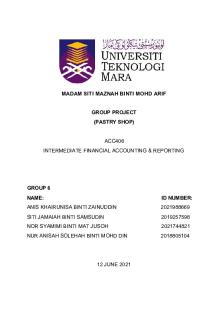
Group Project Account ( Group 6)
- 21 Pages

ECO 201 Project Template Tracy
- 13 Pages

ECO 201 Final Project AMD
- 11 Pages
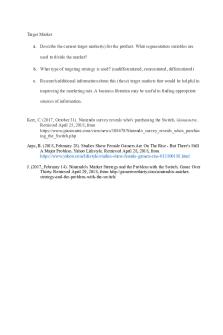
Group Project- Target Market
- 4 Pages
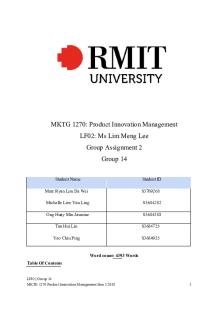
PIM Group Project 2
- 68 Pages
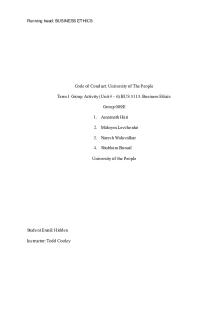
Group Project 009E Final
- 21 Pages
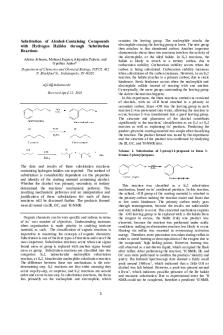
Group Project JOC Note
- 4 Pages

Group Project Proposal
- 1 Pages
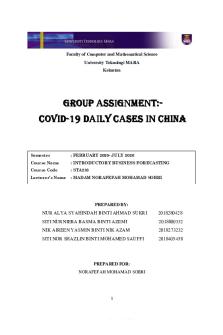
Group Project STA 233
- 33 Pages
Popular Institutions
- Tinajero National High School - Annex
- Politeknik Caltex Riau
- Yokohama City University
- SGT University
- University of Al-Qadisiyah
- Divine Word College of Vigan
- Techniek College Rotterdam
- Universidade de Santiago
- Universiti Teknologi MARA Cawangan Johor Kampus Pasir Gudang
- Poltekkes Kemenkes Yogyakarta
- Baguio City National High School
- Colegio san marcos
- preparatoria uno
- Centro de Bachillerato Tecnológico Industrial y de Servicios No. 107
- Dalian Maritime University
- Quang Trung Secondary School
- Colegio Tecnológico en Informática
- Corporación Regional de Educación Superior
- Grupo CEDVA
- Dar Al Uloom University
- Centro de Estudios Preuniversitarios de la Universidad Nacional de Ingeniería
- 上智大学
- Aakash International School, Nuna Majara
- San Felipe Neri Catholic School
- Kang Chiao International School - New Taipei City
- Misamis Occidental National High School
- Institución Educativa Escuela Normal Juan Ladrilleros
- Kolehiyo ng Pantukan
- Batanes State College
- Instituto Continental
- Sekolah Menengah Kejuruan Kesehatan Kaltara (Tarakan)
- Colegio de La Inmaculada Concepcion - Cebu
